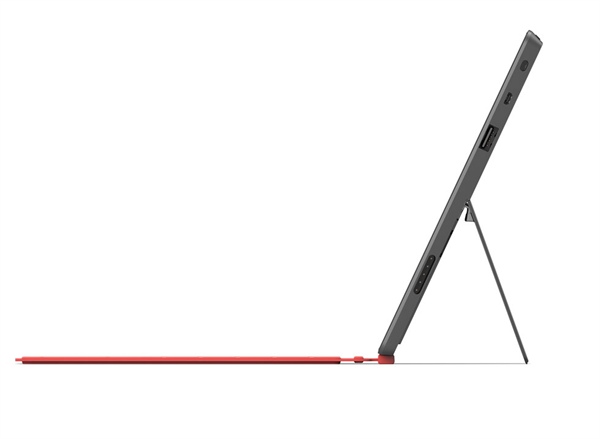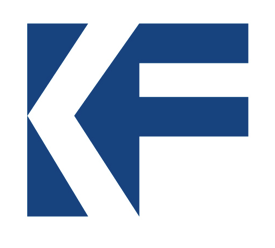

Microsoft’s unknown but intriguing tablet: Yet another company made its jump into the tablet market this week, but this was a more formidable competitor than most: Microsoft unveiled its new Surface tablet PC with precious little information, though the keyboard-cover and Windows 8 operating system got some critics’ attention. Reaction from analysts was generally mixed (you can see a good variety at Engadget and the Guardian) — many were intrigued and encouraged by what they saw so far, but wanted to know more before they formed a verdict.
The big question for many observers was whether Surface might finally present a legitimate competitor for the iPad. Reuters talked to experts who said it’s too soon to tell (especially since we don’t know its price yet), and The New York Times’ David Pogue argued that Microsoft has an uphill battle to fight, particularly because of how far behind Apple it’s starting. The Times’ Sam Grobart, however, said Microsoft may be gunning more for the ultra-light notebook computing market than the touch-screen tablet market.
Mat Honan of Gizmodo said Surface’s keyboard will be the key to challenging the iPad and Macbook Air’s dominance in those areas, and Dutch entrepreneur Max Huijgen asserted that the keyboard finally moves tablets from consumption to creation devices. The Verge’s Joshua Topolsky said Surface could fit perfectly between the iPad and the laptop, but it’ll depend on price and how many developers they can get to create apps for it.
Several others noted that this week’s announcement marked a significant shift for Microsoft — from software developer to hardware producer. Microsoft has ventured into hardware before (most notably with its mp3 player Zune), but as All Things D’s Ina Fried pointed out, this is a much more important venture. Slate’s Farhad Manjoo argued that the Surface seems to be a much more thought-out venture into hardware than the Zune. He and Dan Frommer of SplatF were excited that Microsoft is finally taking quality hardware into its own hands, as Frommer said: “it sure looks like a better strategy for Microsoft than only trusting the Samsungs of the world to design great Windows tablets, and only trying to generate mobile revenue from Windows sales.”
Meanwhile, the Columbia Journalism Review’s Ryan Chittum took the opportunity to chastise the tech press for its fawning coverage of product announcements, saying they’re acting more like an infomercial audience than journalists.
Blogging, big ideas, and ‘self-plagiarism’: One of nonfiction writing’s young stars was discovered to be repeatedly reusing his own work this week, raising some questions about the relationship between journalism, blogging, and trading in “big ideas.” Jonah Lehrer, who was recently hired by The New Yorker, was discovered to have borrowed much of the material for his first several New Yorker blog posts from earlier pieces. Jim Romenesko first uncovered the repetition in one post, and it was quickly found in each of his others, as New York magazine documented.
Edward Champion of Reluctant Habits soon found several re-used passages in Lehrer’s most recent book, and more serious issues cropped up as well: Romenesko and Poynter’s Andrew Beaujon noted cases in which Lehrer had made it sound like he had gathered information directly when they had in fact come from secondhand sources. All of Lehrer’s New Yorker posts now contain editor’s notes, and Lehrer has apologized. While his editor at The New Yorker said he “understands he made a serious mistake,” it appears he won’t be fired.
Much of the discussion around Lehrer centered on just how serious of a mistake he had made, and why it might have happened. Gawker’s Hamilton Nolan argued that even if he’s not cheating himself with his copying, he’s cheating his employer, who’s not paying him to recycle old material. Jack Shafer of Reuters made a similar point, but noted that certain types of republication are a pretty established part of journalistic practice. Poynter’s Kelly McBride talked about how the practice cheats the audience.
As for why Lehrer might have done this, Gawker’s Nolan concluded that Lehrer simply “doesn’t know how to do journalism” and said that while he might consider himself just a purveyor of ideas, The New Yorker is very much a journalistic publication. Slate’s Josh Levin posited that Lehrer’s “big ideas” stock and trade isn’t compatible with blogging, because while big ideas are rare and have to be wrung dry, blogging requires constant streams of fresh insight. At the Columbia Journalism Review, Felix Salmon said “big ideas” blogging can indeed be done — by iterating ideas, using links as shorthand, riffing on what you’re reading, and interacting with peers.
Others objected to the term “self-plagiarism” to describe what Lehrer did — the Washington Post’s Erik Wemple, Reuters’ Shafer, and the New York Times’ Phil Corbett, via Poynter. And Poynter’s Craig Silverman pointed out how catching plagiarists (or serial repeaters) has become something of a game in itself.

Debating the value of print in New Orleans: The aftermath of the New Orleans Times-Picayune’s cuts continued this week, as the paper met with the local tech crowd and published another optimistic message to readers about its future, this one from its publisher, Ricky Mathews. Ryan Chittum of the Columbia Journalism Review criticized Mathews for not mentioning the paper’s massive layoffs, and Poynter’s Steve Myers reported on the efforts of readers and advertisers to provide for laid-off reporters and convince Advance to rethink its print cuts.
Poynter’s Rick Edmonds agreed with those readers and former staffers, breaking down the numbers and arguing that there isn’t much of a business case for cutting print editions of the paper. Instead, he said, “The move only makes financial sense as the occasion for dumping many well-paid veterans and drastically slashing news investment” — which is how the paper appears to be using it.
The University of Colorado’s Steve Outing defended the decision to cut print editions, arguing that an investment into mobile media by the TP could keep readers just as informed as with a seven-day print edition. Poynter adjunct Jason Fry came down in the middle, saying that while he’s not opposed to cutting print in general, New Orleans is the wrong place — and Advance’s strategy the wrong way — to do it.

Two paywalls up, one down: News organizations (and newspapers in particular) continue to put up paywalls at a steady pace — this week, we got an announcement from one of Australia’s largest newspaper companies, Fairfax Media, that it would put up a paywall and cut 1,900 jobs at its publications, two of which, the Sydney Morning Herald and The Age, will merge newsrooms. Poynter’s Andrew Beaujon summarized the situation, and former Age editor Andrew Jaspan explained Fairfax’s decline and sounded a warning regarding the concentration of Australian media in the hands of a few moguls.
Warren Buffett’s longest-held newspaper, The Buffalo News, also announced plans for a paywall. Beaujon has the details, and The New York Times’ Christine Haughney examined the News for clues to Buffett’s style of newspaper management. Elsewhere, however, the New York Post (a Rupert Murdoch paper) dropped the pay plan for its iPad version, and the Online Journalism Review’s Robert Niles made the case against paywalls and urged newspapers to focus solely on the unique value they can provide.
 A new set of news innovators: The Knight Foundation announced the winners of the first round of this year’s Knight News Challenge, the first year of its new three-times-a-year incarnation. Here are the six winners, all based on the theme of networks: Behavio, a collective mobile data-sharing service (Lab profile, Techcrunch profile); Peepol.tv, a livestreamed video collection project; Recovers.org, a disaster recovery organization (Lab profile); Tor Project, an open-source anonymity-aiding initiative (Lab profile); Signalnoi.se, a tool to help newsrooms understand how information moves through social networks (Lab profile, Journalism.co.uk profile); and Watchup, a video news iPad app (Lab profile).
A new set of news innovators: The Knight Foundation announced the winners of the first round of this year’s Knight News Challenge, the first year of its new three-times-a-year incarnation. Here are the six winners, all based on the theme of networks: Behavio, a collective mobile data-sharing service (Lab profile, Techcrunch profile); Peepol.tv, a livestreamed video collection project; Recovers.org, a disaster recovery organization (Lab profile); Tor Project, an open-source anonymity-aiding initiative (Lab profile); Signalnoi.se, a tool to help newsrooms understand how information moves through social networks (Lab profile, Journalism.co.uk profile); and Watchup, a video news iPad app (Lab profile).
Mathew Ingram of GigaOM saw in the winners the importance of mobile media, video, and large-scale data collection, while the Lab’s Joshua Benton said he feels the overall quality of applications was up this year. The foundation also announced the creation of the Knight Prototype Fund, which is intended as a smaller-scale, quicker way of funding innovative news projects. The Lab’s Justin Ellis profiled the fund, while the MIT Center for Civic Media published an interview with two of its principals.
Reading roundup: Here are the other stories folks in the news-tech world were talking about this week:
— The New York Times announced a partnership with BuzzFeed to collaborate on coverage of this year’s political conventions, particularly through video. The Washington Post’s Erik Wemple looked at what it means for the Times and BuzzFeed, and The Atlantic’s Megan Garber said you can expect BuzzFeed’s lolcattiest tendencies to be toned down.
— WikiLeaks’ Julian Assange sought asylum in the Ecuadorian embassy in London as an attempt to avoid extradition to Sweden on sex crime accusations. Doing so was apparently a breach of his bail terms, but Salon’s Glenn Greenwald defended Assange’s right to seek asylum. Former WikiLeaks staffer James Ball looked at where things currently stand with the Assange drama.
— Information Architects’ Oliver Reichenstein proposed a strikethrough “mark as error” function on Twitter as an alternative to deleting erroneous tweets. Poynter’s Craig Silverman and GigaOM’s Mathew Ingram voiced their support for the idea, and Journalism.co.uk asked editors for their thoughts on it. Twitter, meanwhile, did introduce an option to view profiles without replies.
— In the most recent of several thoughtful pieces on how to improve journalism education that have been published lately, Howard Finberg advised j-schools to look to large-scale, online education to train tomorrow’s journalists, and j-prof Jeff Jarvis sketched a few ideas for such a plan. J-prof Carrie Brown-Smith did counter, however, that j-schools’ current skills education has value because an alarming number of students come in with such poor grasp of basic skills.
— Finally, two smart pieces to read this weekend: Here at the Lab, Jonathan Stray wrote about the inherent difficulties in designing filtering algorithms, and at Poynter, PolitiFact’s Bill Adair urged journalists to supplant the news story as the basic form of journalism.